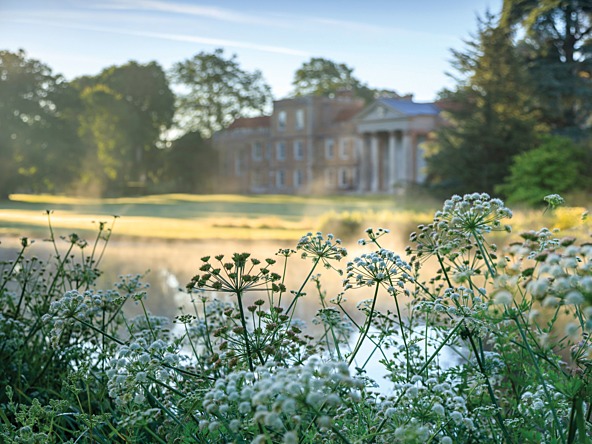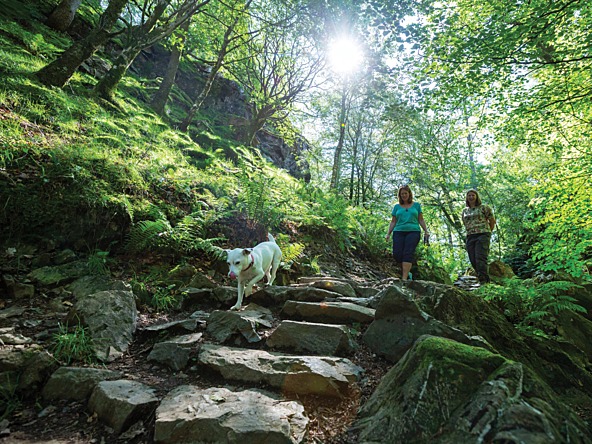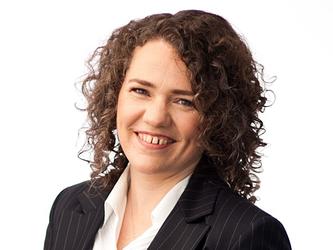Trust in place: How the National Trust uses data to put nature in the spotlight

Recent TV adverts from the National Trust are like a balm for the soul; in one, frothy waves lap a pebbled beach, while in another, a small bird hops across mossy stones. None has a voiceover, instead, all are sound-tracked by the rise and fall of the waves and birdsong.
Connection with nature is perhaps something we’ve all instinctively appreciated more in the past few months – confined to our homes, many of us have felt renewed vigour from long walks and the benefit of time spent outdoors.
The National Trust has had an idea of nature’s healing properties for a while now – the organisation’s 125th anniversary advert by creative agency Wieden+Kennedy drew on the 19th century words of its co-founder Octavia Hill: “We all want quiet. We all want beauty. We all need space.”
For an organisation dedicated to preserving historic places and spaces, understanding and communicating the relevance of those spaces to our modern lives is a key priority for the National Trust.
“Life is busy and people – no matter whether they are members or not – need to get more in touch with nature,” says Christina Finlay, director of data and insight at the charity. “All sorts of academic research shows that nature has a proper calming effect on us, and over the past 20 years, we’ve all been getting less and less in touch with nature. All of the work we’ve done with academics – and our own research – has shown that’s a really tangible thing.”
It is not only about highlighting the benefits of being physically present in the outdoors – the campaign used natural sounds, such as waves rushing in, to trigger autonomous sensory meridian response (ASMR) in viewers. “When people can’t actually get into nature, how can we trigger that same response – especially for people who live in the middle of the city?”
There was a “gut feel” within the organisation that nature was positive, says Finlay, but the insight function sought to validate that, first through neuroscience work with Walnut Unlimited, to explore the link between meaningful places and emotion.

National Trust Images/John Miller
Further research with the audience community, based on the ‘five ways to wellbeing’ framework, involved asking participants to complete one of 20 things each day, such as smelling a flower, stopping to look at the sun rise in the morning or watching the stars. After a week, participants reported a fundamental difference in how they felt.
The National Trust has also worked with the University of Derby’s nature connectedness research group and, in 2018, adopted the group’s ‘pathways to nature connection’ research to inform its engagement activities.
Finlay is responsible for four teams: data and analytics; business intelligence; data marketing, which manages the customer journey; and the insight team, which conducts qualitative and quantitative research.
The value of insights to the organisation, in her view, lies in customer experience. “For the customer journey team, we have to see holistically in a way that the organisation can’t. The organisation can be a little bit siloed in the way that most organisations are, and what we want is to make sure that the audience has a consistent experience with us.”
For an organisation that produces other types of research – it has a large team of volunteers poring over historical documents – alongside audience insight, the two try to work together where possible.
Discussing the research with the University of Derby, Finlay says: “Our intention was to straddle the two – to have the academic rigour but also the commerciality that we could then drive support off the back of; and third, we wanted to drive press.”
The trust also recently produced a research report on colonial histories (see boxout) led by its academic status team, which sits separately from Finlay’s team and has Independent Research Organisation status.
Finlay says: “It’s a difficult story to tell, but we think it’s an important story to tell – acknowledging the history of a lot of our houses and the context they were in 200 years ago, as well as now. For so many of our members, history is so important to them, so what we want to do is recognise the context and then what role that plays for us in today’s society.”
National Trust Images/Chris Lacey

Key values
While the public health crisis has been challenging for the National Trust, most notably with the temporary closure of many of its properties to the public, the insight team did not change its objectives as a result – rather, its existing priorities were brought into sharper focus – the visitor experience, the conservation of properties and conservation of nature. “It’s almost like we’ve hunkered down and said that we need to focus even more on our strategic priorities,” says Finlay.
“How do we drive that insight that gets to the heart of what will make people really connect with the organisation? We also create efficiencies, and because I own and work with all of the data, it’s about how can we make data much more efficient, so that everyone can look and see the same thing, which in many organisations can be quite hard.”
For example, the function has put into place a new segmentation created by Claire Hildreth with Morris Hargreaves McIntyre, driven by qualitative and quantitative research. “We fed that through into all of our data-driven insights so that everybody in the organisation can see the same segmentation of the audience, and now, every time we do qual, that feeds into that segmentation and we have one version of the truth,” says Finlay.
At a time when many of its houses remain closed, a key challenge for the National Trust has been focusing on the value of its membership. “The biggest thing for my entire team is how we can help the organisation to connect in deeper ways with our audiences so that they want to maintain their membership while we’re going through this tough time and they can’t necessarily visit as often as possible.”
During spring, the insight team subscribed to a tracker run by Kokoro (which runs its brand tracker) and produced a weekly report on how the nation was feeling, which was sent to the executive team.
When the trust began reopening some properties, insight from that was used to help inform how it went about the process. Safety was the main issue, but it was important for people to understand what measures were being taken and how it was being done.
How would Finlay summarise her team’s approach to customer experience? Focusing on the fundamentals. “We have a phrase we use in the insight team: ‘Don’t put a mint on the pillow if the sheets are dirty.’

National Trust Images/Ben Selway
“A lot of the properties might spend time on amazing events, but the most important thing for visitors is that the car park is easy to navigate, the toilets are close and clean, there’s no litter about, that kind of stuff,” says Finlay. “If you’ve got dirty sheets, that makes people feel like the good stuff isn’t that good.”
The organisation has more than 500 properties and the insight team uses Tableau as a tool to share insight with general managers about what steps they can take to improve their service.
“Tableau allows us to scale our qualitative and quantitative research data,” says Finlay. “For example, we have a segmentation and our third-party data tells us that around a certain property, within a 10-minute drive time or a 20-minute drive time, there are these types of people, so therefore for property A, these are the things that are going to be important to your audiences. It’s our way of scaling everything we do.”
In addition to merging its qual and quant research with other data, natural language processing is another area of focus, and has two purposes for the trust, according to Finlay.
“The first is text analytics – we get a lot of qualitative research and we run a continuous survey, so we have a lot of text that we want to analyse and the data science team is working on a programme.
“The other application – because we are in an organisation that is not quite so data-literate – I would like is for people to be able to ask a natural language question and be able to get the insight they want. For example, our director general typing ‘what were visitor numbers at a certain property last weekend?’ into a search bar, and a chart popping up. That, for me, is the speed and ease at which I would like insight to get out to the rest of the organisation.”
RECOGNISING HISTORY
In September 2020, the National Trust published an interim report on the connections between colonialism and 93 of the properties within its care, including links with historic slavery.
The report was edited by the trust’s head curator Dr Sally-Anne Huxtable, world cultures curator Dr Christo Kefalas, and textiles curator Emma Slocombe, along with Professor Corinne Fowler, University of Leicester.
Data includes the historic sources of wealth linked to slave trades, goods and products of enslaved labour and the East India Company for buildings and estates in the care of the organisation. The report also documents the houses linked to the abolition of slavery and campaigns against colonial oppression.
Dr Tarnya Cooper, curatorial and collections director at the National Trust, said at the time of the report’s publication: “It’s our job to research, interpret and openly share full and up-to-date information about our places. This includes information about colonialism and slavery where it is relevant. This is part of caring for our properties in a historically responsible and academically robust way. The work helps us all understand what’s gone before; now and for future generations.”
Some of the research has been used to update the trust’s digital content and is being used to inform a review of visitor information and interpretation at certain properties. The National Trust is continuing its research in this area and is also working with an external advisory group to shape future research.
Editor’s note: Christina Finlay left the National Trust prior to publication of this article
Image credits from top: National Trust Images/Chris Lacey; National Trust Images/John Miller; National Trust Images/Chris Lacey; National Trust Images/Ben Selway
This article was first published in the January 2021 issue of Impact.

We hope you enjoyed this article.
Research Live is published by MRS.
The Market Research Society (MRS) exists to promote and protect the research sector, showcasing how research delivers impact for businesses and government.
Members of MRS enjoy many benefits including tailoured policy guidance, discounts on training and conferences, and access to member-only content.
For example, there's an archive of winning case studies from over a decade of MRS Awards.
Find out more about the benefits of joining MRS here.














0 Comments